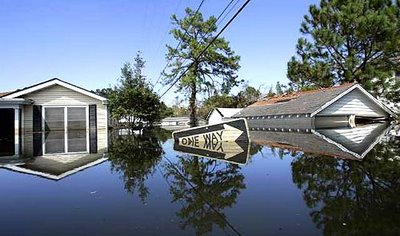Don't Mess With Mother Nature
 The Los Angeles Times architectural critic, Christopher Hawthorne, pens a column about the growth of New Orleans and the propensity of recent builders to turn their backs on the lessons of earlier builders and their adaptations to New Orleans natural environment.
The Los Angeles Times architectural critic, Christopher Hawthorne, pens a column about the growth of New Orleans and the propensity of recent builders to turn their backs on the lessons of earlier builders and their adaptations to New Orleans natural environment.
It's no coincidence that the most distinctive neighborhoods in New Orleans date from the decades when residents, architects and planners were most keenly aware of the city's vulnerability. Repairing that close connection between the natural and the built environments” which was replaced in the 20th century by a blind, ultimately catastrophic faith in modern infrastructure” may be the most direct way to recapture the vitality that once made residential neighborhoods in New Orleans among the most admired in the world. It also may help change how Americans in other cities threatened by natural disasters, Los Angeles chief among them, think about the relationship between architecture and risk.Putting aside his ingorance of simple architectural detailing, the basic premise is correct. By putting too much faith man's ability to beat back the elements, homeowners resorted to simple and inexpensive building techniques that doomed many dwellings when the big one came.
But after reading the column through, I'm not sure the author has a point. He starts off writing about building on high ground with houses perched on piers two to three feet above grade. Then segways into the invention of pumps that allowed development of swampland allowing the city to expand followed by the popularity of the "ranchburger" which are vulnerable to even minor flooding.
Well duh.
So where do we go from here?
As an architect and homeowner, I'm quite aware of the drawbacks of the "slab-on-grade" home: I live in one. And for good reason. I couldn't afford to build a raised cottage. And therein lies the problem. Most people in this area would probably prefer to live in a raised house. Building techniques need to be investigated that would reduce the costs incured by building above ground.
Until then, people will continue to seek affordable housing and calculate the risk involved as the price of putting a roof over one's head.

No comments:
Post a Comment